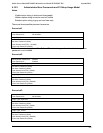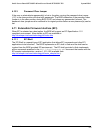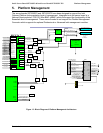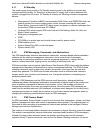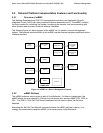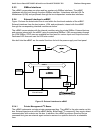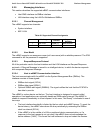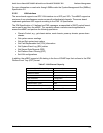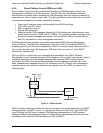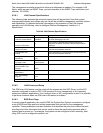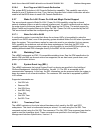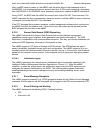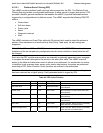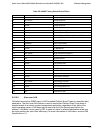
Intel® Server Board SE7320SP2 & Intel Server Board SE7525GP2 TPS Platform Management
Revision 2.0
110
5.2.5 Messaging Interfaces
This section describes the supported mBMC communication interfaces:
• Host SMS interface via SMBus interface
• LAN interface using the LAN On Motherboard SMBus
5.2.5.1 Channel Management
The mBMC supports two channels:
• System interface
• 802.3 LAN
Table 46: Supported Channel Assigments
Channel Id Media type
Interface
Supports
Sessions
1 802.3 LAN IPMB 1.0 Multi sessions
2 System Interface IPMI-SMBus Session-less
5.2.5.2 User Model
The mBMC supports one anonymous user (null user name) with a settable password. The IPMI
command to set the password is supported.
5.2.5.3 Request/Response Protocol
All of the protocols used in the host interface and the LOM interface are Request/Response
protocols. A Request Message is issued to an intelligent device, to which the device responds
with a separate Response Message.
5.2.5.4 Host to mBMC Communication Interface
The host communicates with the mBMC via the System Management Bus (SMBus). The
interface consists of three signals:
• SMBus clock signal (SCLH)
• SMBus data signal (SDAH)
• Optional SMBus alert signal (SMBAH). The signal notifies the host that the PC87431x
has data to provide.
The mBMC is a slave device on the bus. The host interface is designed to support polled
operations. Host applications can optionally handle an SMBus alert interrupt if the mBMC is
unable to respond immediately to a host request. In this case, “Not Ready” is indicated in one of
two ways:
• The host interface bandwidth is limited by the bus clock and mBMC latency. To meet the
device latency, the mBMC slows down the bus periodically by extending the SMBus
clock low interval (SCLH).
• If the mBMC is in the middle of a LAN or peripheral device communication, or if a
response to the host request is not yet ready, the mBMC does not acknowledge the
device address (“NAK”). This forces the host software to stop and restart the session.



